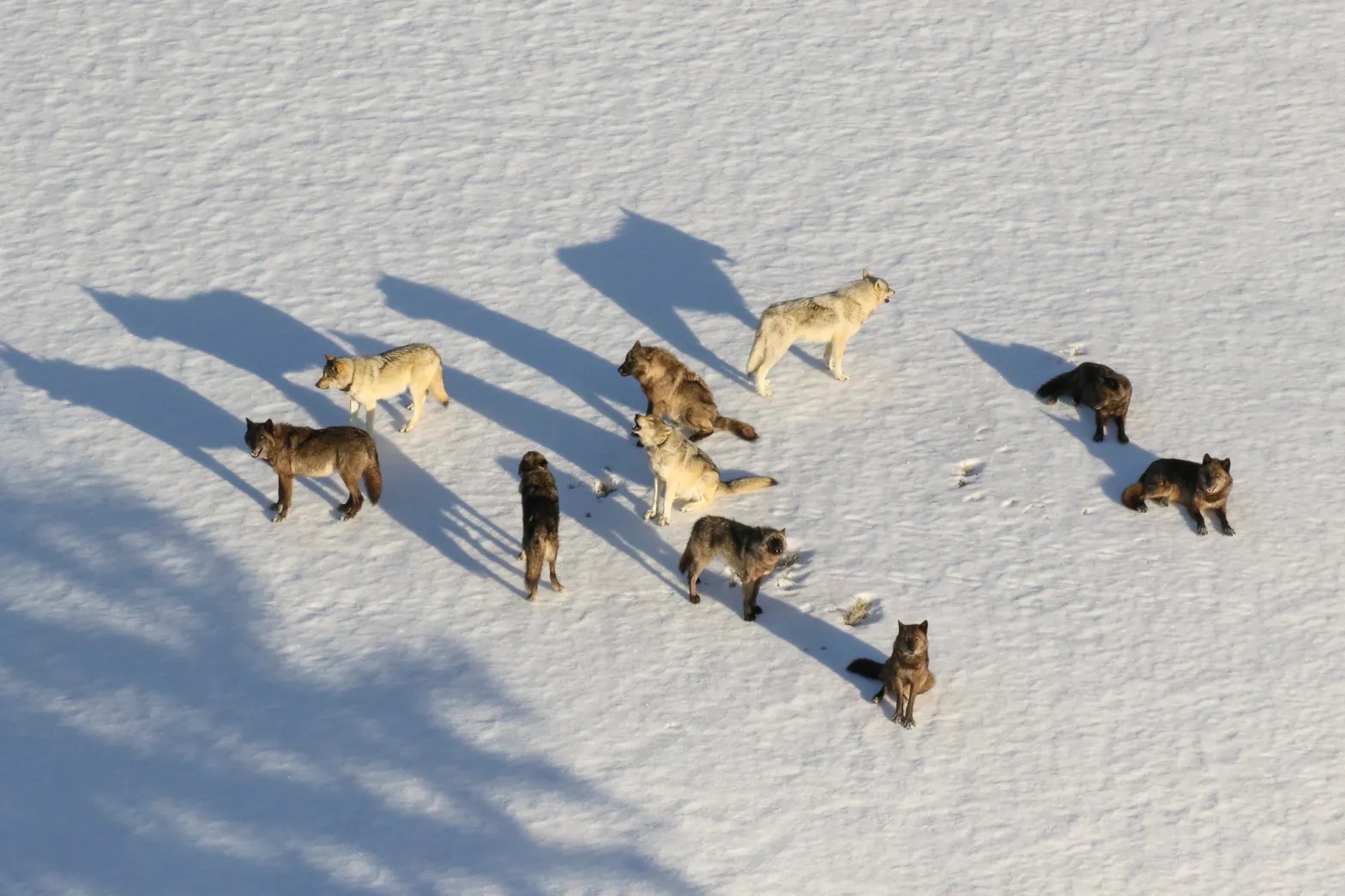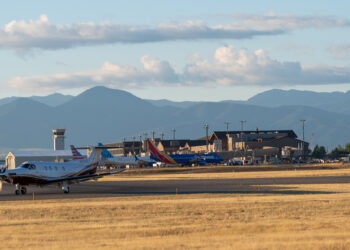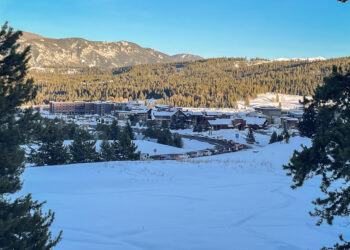National Park Service, wolf watchers and some state officials are making a push to dissuade Montana from continuing aggressive pursuit of naive wolves at the national park’s doorstep.
By Mike Koshmrl WYOFILE.COM
A recent spate of wolf killings just outside of Yellowstone National Park has altered fundamental aspects of the canines’ behavior, and threatened the foundations of one of the most storied wildlife research efforts in American history, according to park scientists.
Twice in recent months Yellowstone National Park senior wildlife biologist Doug Smith and his team of researchers have observed highly unusual mating behavior.
Many more wolves have been getting frisky than expected. Ordinarily in Yellowstone, only each pack’s dominant alpha male and female get the opportunity to mate. The custom is reflected in 27 years of hard data: 85 percent of the time, park packs produce single litters.
But this year—in the wake of at least 25 wolves being shot or trapped just beyond the park’s boundaries—Yellowstone Wolf Project personnel observed three or four females in two different Northern Range packs “tied” and breeding, Smith said. “Usually the most dominant wolf prevents other wolves from breeding,” he said. “You lose that [dominant] wolf and it opens up opportunities for other wolves.”
It appears, in other words, that with their pack hierarchies disrupted by the record-setting killings, some wolves have abandoned their selective mating customs.
“We have multiple females pregnant in at least two packs—Junction and Wapiti—that could be due to the mortality that we’ve experienced,” Smith said. “It’s broken apart the social structure, it’s messed with the hierarchy, and it’s actually produced more pups. Now this is a hypothesis, but this is what I would call an artificial stimulation of wolf reproductive capacity. By going in and killing them, you stimulate reproduction.”
Yellowstone’s Northern Range is widely regarded as the best place on the planet to watch wild wolves. For researchers it holds a unique appeal: In the Lower 48, Yellowstone is the easiest place to observe wolves in their natural state.
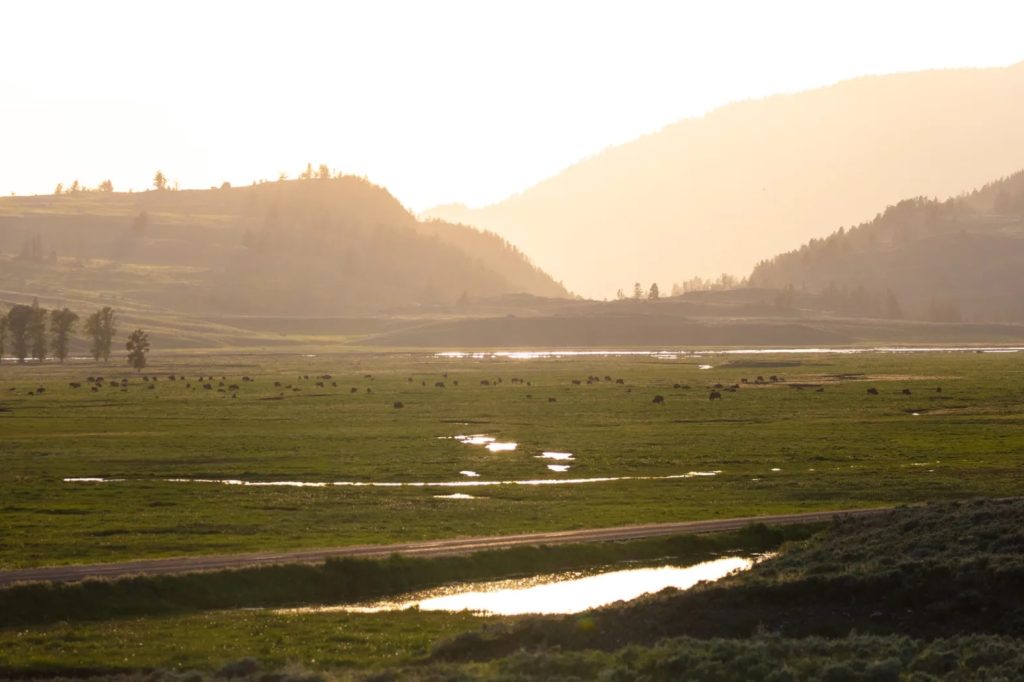
Since the U.S. Fish and Wildlife Service reintroduced 31 wolves to the park in 1995 and ’96, the intensive research effort has been predicated on understanding wolf ecology in the absence of human persecution. Yellowstone’s 2.2 million acres have proven a grand arena for this research. Outside of Yellowstone about 80 percent of Idaho, Montana and Wyoming wolf deaths can be attributed to people, Smith said, but just 2 to 3 percent of wolves within the park’s boundaries succumb to humankind.
“Human-caused mortality is the story of wolves across North America,” Smith said. “One place that was not the case was Yellowstone, and we’re not anymore.”
Smith estimates it will take three to five years for Yellowstone’s wolf population to revert to a more natural condition following the 2021-22 state managed hunt—provided Montana changes the rules that allow wolf hunters to aggressively pursue the naive, human-conditioned canines without limit just outside the protected park.
All but one of Yellowstone’s nine packs lost wolves to hunters and trappers, he said.
The Junction Butte Pack—Yellowstone’s most visible wolf pack thanks to a den site near the road—was hit the hardest. Eight wolves from the once 35-animal-strong mega pack were shot or trapped over the boundary.
The Phantom Lake Pack, typically positioned between Junction Butte’s territory and the northern park boundary, used to keep the Junction Butte wolves from straying out of Yellowstone. But after six of its wolves were killed by boundary hunters, the remaining Phantom Lake wolves dispersed.
“They’re gone,” Smith said.
Other packs lost particularly influential wolves. An “unmistakable” half gray, half black 8-year-old alpha female from the 8 Mile Pack, for example, was caught in a trapper’s set outside the park boundary, Smith said.
“After she was dead,” he said, “the rest of the pack went places that they haven’t been in 10 years.”
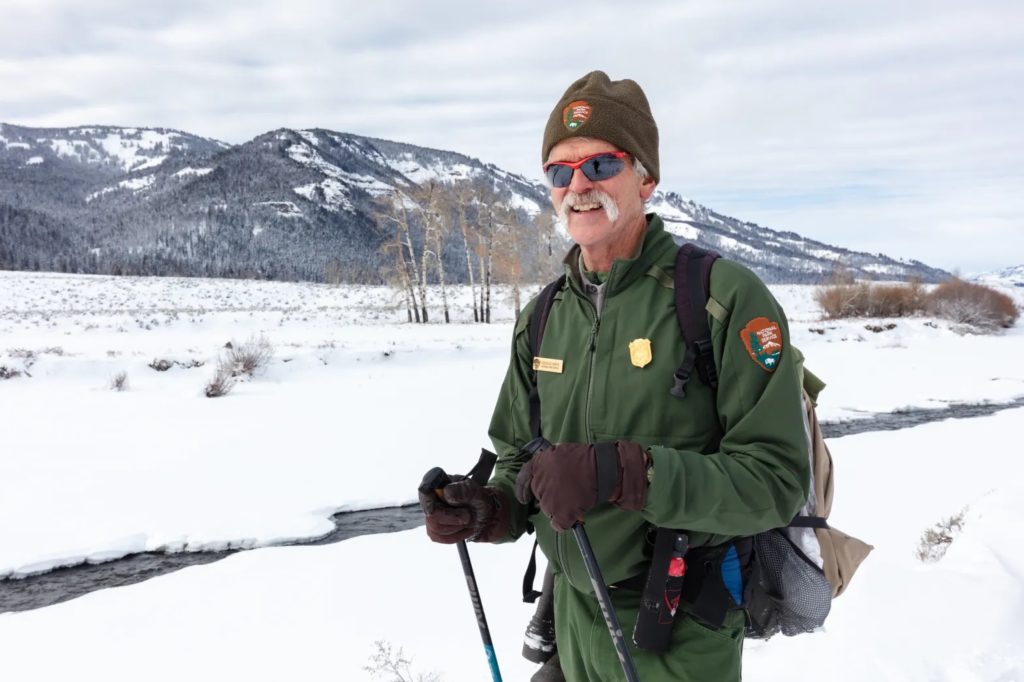
The new realities have created new learning opportunities for researchers, but Smith, for one, isn’t happy about it.
“The question now is… let’s see what happens,” Smith said. “But we really don’t want that, because it is not aligned with the National Park Service mission. The National Park Service mission is to protect natural processes.”
Shifting policies, ethics
Montana’s elimination of a stringent one-wolf hunting limit for two park-adjacent zones paved the way for the increased killings.
The area is accessible and roaded, and a small group of wolf hunters took advantage of the abruptly more liberal bag limit.
“There were scores of people watching the park line with spotting scopes every day,” Smith said.
Montana Fish, Wildlife and Parks Commissioner Pat Byorth, whose district includes the northern boundary of Yellowstone, recalled that some of the bills in the Montana Legislature liberalizing wolf hunting and trapping advanced despite heavy opposition.
“That was a little bit sketchy,” said Byorth, a Bozeman resident whose day job is with Trout Unlimited.
Ultimately, he said, the Legislature passed, and Montana Gov. Greg Gianforte signed measures directing the state wildlife agency to reduce wolf populations. The new policy included the use of methods not normally considered fair chase hunting, like spotlighting and hunting from aircraft. In the aftermath, the Montana Fish, Wildlife and Parks Commission reworked its wolf-take quota system throughout the state. Byorth “advocated strongly” to retain the two one-wolf-capped buffer zones along the border of Yellowstone, but the majority of his counterparts on the commission disagreed. The commission instead eliminated the buffer zones and folded the once protected turf into the remainder of Region 3, where the limit was 82 wolves. By the time the season closed, hunters and trappers had killed 85 wolves in the area — three above the limit.
Wolf hunters in the Gardiner and Jardine areas just north of the park capitalized on the change.
“There’s a group of dedicated wolf hunters down there, and they were very effective,” Byorth said. “They killed, I think, 19 wolves that were identified as members of Yellowstone packs.”
Hunters in Wyoming and Idaho killed six more known Yellowstone wolves.
The Yellowstone wolves on the Northern Range, accustomed to throngs of humans with pricey optics, lacked a recognition that humans posed a lethal threat, and they proved relatively easy targets.
“If you’re a wolf watcher in the park, you know they tolerate you at 100 to 200 yards,” Smith said. “That’s a perfect rifle shot.”
The naivety of the Yellowstone wolves was evident in how they were killed. Trapping is by far the most effective means of harvesting a wolf, but 23 of the 25 Yellowstone animals killed over the last year were taken by gunfire, Smith said.
“If you’re a wolf watcher in the park, you know they tolerate you at 100 to 200 yards. That’s a perfect rifle shot.”
YELLOWSTONE NATIONAL PARK SENIOR BIOLOGIST DOUG SMITH
The 19 wolves killed right outside the northern boundary constituted a disproportionate percentage of those harvested in Montana’s Region 3 and the state as a whole. Park wolves amounted to 22 percent of those killed in the zone, which encompasses over 18,000 square miles and covers over 12 percent of Montana.
“There were 273 wolves killed in Montana this hunting season,” Smith said. “Nineteen” —equal to 7 percent— “were Yellowstone wolves, yet less than 1 percent of the Montana population of wolves shares a border with Yellowstone.”
Specimen Creek Outfitters hunting guide Ralph Johnson had a front-row seat to the monthslong targeting of park wolves that moseyed across the boundary.
There was a group of about 20 Gardiner and Livingston men who patrolled the boundary area on a routine basis, he said. They used electronic calls and stayed in close touch with each other about wolves’ whereabouts via cell phones.
The Jardine, Montana resident disapproved: “It’s not hunting,” Johnson said. “It’s just killing is what it is, with those guys.”
A defense
Other members of Southwest Montana’s hunting community contacted by WyoFile pushed back on the allegation that the boundary hunters’ methods ran counter to fair-chase ethics.
Bill Hoppe has a Jardine ranch and pursued park wolves last winter, he said, though he never managed to kill one himself. He argued that the Yellowstone wolves were fast learners, quickly adjusting to the pressure.
“My grandson hunted for days and days and days, and he never got one,” Hoppe said. “Those animals are smart, smart, smart.”
Hoppe doesn’t think it’s fair that wolves are regarded differently than other park wildlife pursued by hunters across the boundary.
“The Indians, they shoot the elk and the buffalo and they’re still shooting them and it’s almost the end of April,” he said. “If they want to talk about ethics, there’s something [critics] ought to get on and talk about.”
Four Native American groups—the Confederated Tribes of the Umatilla Indian Reservation, Confederated Salish and Kootenai Tribes, Nez Perce Tribe and the Shoshone-Bannock Tribes—have treaty rights to hunt in the region, and are not bound to state hunting seasons.
The prospect that Yellowstone’s remaining wolves have gained a newfound wariness is not welcomed by all. Gardiner naturalist and biologist Nathan Varley, who runs the Yellowstone Wolf Tracker guiding service, said skittish wolves are his biggest concern and a worst-case scenario for his business.
“Wolves that survive hunting events, they quickly learn that there’s survival value in avoiding humans,” Varley said. “And we’ve relied extensively on wolves that do not have that inclination.”
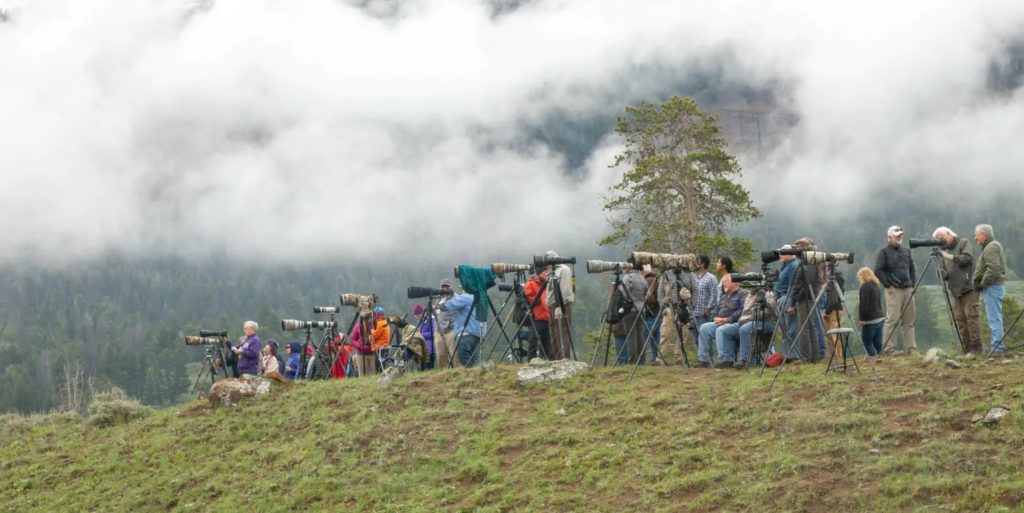
Nearly twice as many Yellowstone wolves were killed during the 2021-22 hunting and trapping seasons than in any other year since reintroduction, but humans culling park packs is not without precedent. In 2012 sportsmen legally killed 11 wolves that spent the majority of the year in Yellowstone then left the park. One of those wolves was the Lamar Canyon pack’s world-famous alpha female, wolf 832F, also known by her birth year, 06. The loss of the Lamar Canyon’s leader “totally disrupted the pack,” retired Yellowstone Wolf Project staffer Rick McIntyre recalled.
“The consequences to the pack were very significant,” McIntyre said. “The founding alpha male had no unrelated females in the pack after the death of 06, meaning that all the remaining females were his daughters. So that caused him to leave the family and disperse.”
There were major implications for wolf watchers. In his Park Service days, McIntyre meticulously maintained data on wolf sightings. At the time the Lamar Canyon Pack was the main pack in the Lamar Valley. Wolf sightings the following year in that wolf-watching mecca declined by 57 percent, according to McIntyre’s records.
It’s tough to say if the same dynamics are in store for 2022. The current pack that dominates Lamar Valley, the Junction Butte Pack, was very large going into the hunting season and is one of the packs with multiple pregnant females. Those conditions should allow the pack to “better absorb” the loss of eight hunter-harvested wolves, McIntyre said.
“It does look like they’re going to be denning at Slough Creek again, so that’s good,” he said.
Not just any wolves
For the first time this year, Yellowstone’s soon-to-be-released annual wolf report will present both year-end and post-hunt population data. There were 131 Yellowstone wolves going into the hunting season, Smith said, and it’s likely that the count will hold steady or even increase.

“Everybody is just going to look at last year’s count and this year’s count, and go what’s the big deal?” Smith said. “Well the big deal is this is no longer a natural population. It’s a human-exploited population and our job [in the National Park Service] is to have a natural population.”
Scientists have learned legions about how protected wolf populations function differently from hunted ones since the Yellowstone Wolf Project kicked off 27 years ago.
“It was once thought that wolf packs and other social animals, they’re a patriarchy—a male-led system,” Smith said. “We have learned that when you don’t have human-caused mortality, it’s lineages of females.”
In other words, daughters and granddaughters are the glue that holds together wolf packs through generations.
“When wolves are being shot up and dying all the time,” Smith said, “you don’t get that stable lineage.”
By having access to protected wolves, Smith said, the Yellowstone Wolf Project has also uncovered new insight on wolf dispersals. “Because you have this matriarchy and females tend to stay and carry on the lineage, males tend to leave to avoid inbreeding,” he said. “They start new packs or join other packs where they’ve lost a breeder.”
Biologists also have a better understanding of natural pack sizes because of the Yellowstone Wolf Project. Packs are larger when they are protected, they now know. Historically, Yellowstone packs average 10 wolves, Smith said. In contrast, in areas where Wyoming hunted wolves during 2020, the average pack size was just five animals, according to the state’s latest monitoring report.
Protected packs also persist for longer than hunted packs, another insight Yellowstone wolf researchers have gleaned. “We have packs that stay on the landscape for 10, 15 years,” Smith said. “We’ve got one—the Mollie’s Pack—that’s been there since 1995. You don’t get that when you’re hunting wolves.”
Had intensive boundary hunting occurred throughout Yellowstone wolves’ modern-day tenure, this scientific discovery would have been stymied.
“We would know none of that,” Smith said.
Getting back to the natural condition, “that’s our job,” Smith said.
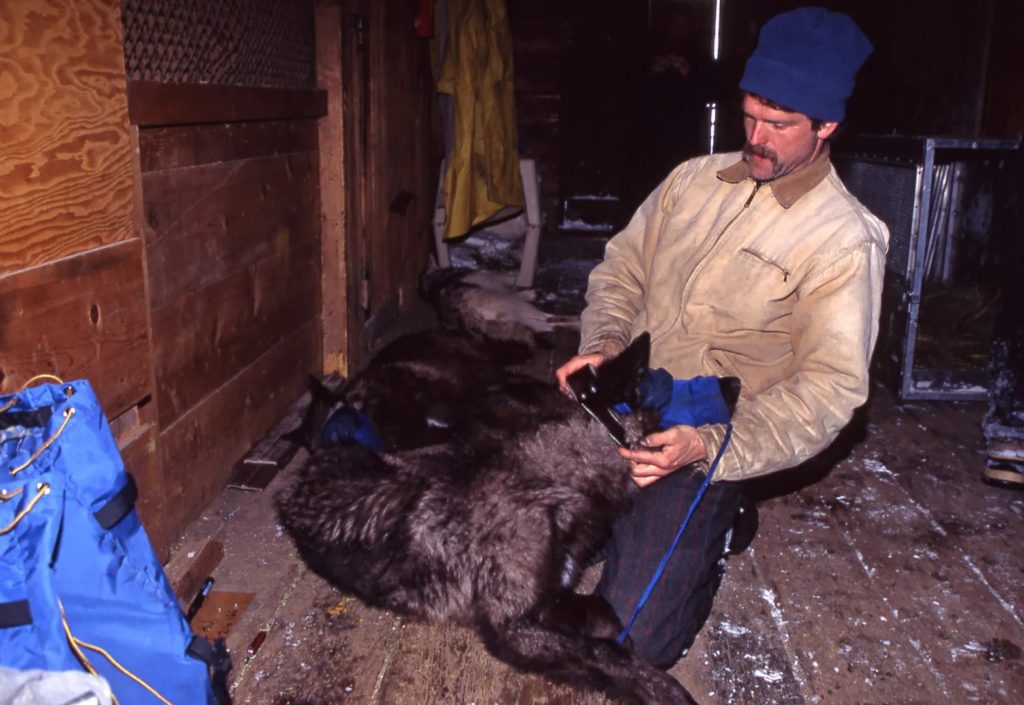
Pressure is mounting to let Yellowstone go back to its business-as-usual wolf research. Teton Village resident Rob Wallace, a former Trump administration cabinet-level official who oversaw the National Park Service and U.S. Fish and Wildlife Service for the Department of the Interior, called for a return to wolf management that respects the federal agency’s research.
“My worry is that this image of Montana, gleefully blasting wolves on the boundary of Yellowstone, poses a serious risk of undermining 27 years of interagency cooperation,” Wallace said. “You’re just stepping into uncharted territory. There’s a large negative reaction from people who care about wildlife resources in Yellowstone, you’ve got the unknown with the courts, and you’ve got a [presidential] administration that’s probably more sympathetic to wolves in Yellowstone than wolves being shot in Montana.”
“I don’t know where this goes,” he said, “but the fact that Montana is approaching this in a way that seems provocative is a risky strategy.”
Byorth, the Montana wildlife commissioner, said he will try again to convince his counterparts to work collaboratively with Yellowstone on wolf management. After the state board’s June 23 meeting, Montana Fish, Wildlife and Parks will issue its wolf hunting proposal for the 2022-23 season. That proposal is subject to public comment.
“The best thing the commission can do is to quiet down some of the fervor surrounding wolf hunting in Montana by reestablishing quotas at some level down at the park,” Byorth said. “It’s rational and allows us to manage wolf populations better across the landscape.”
WyoFile is an independent nonprofit news organization focused on Wyoming people, places and policy.



